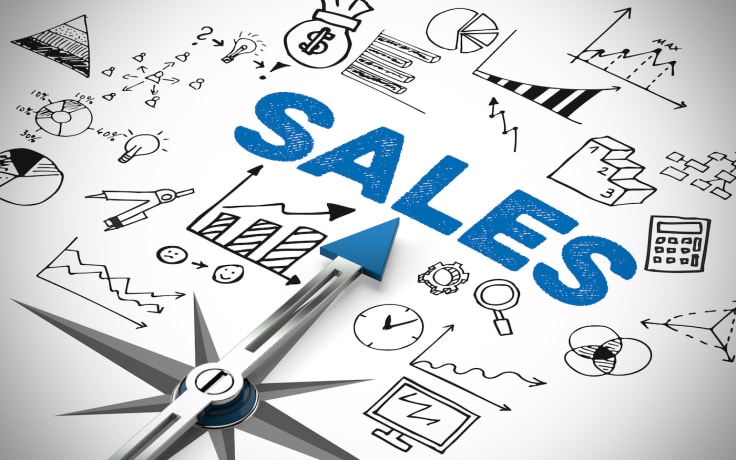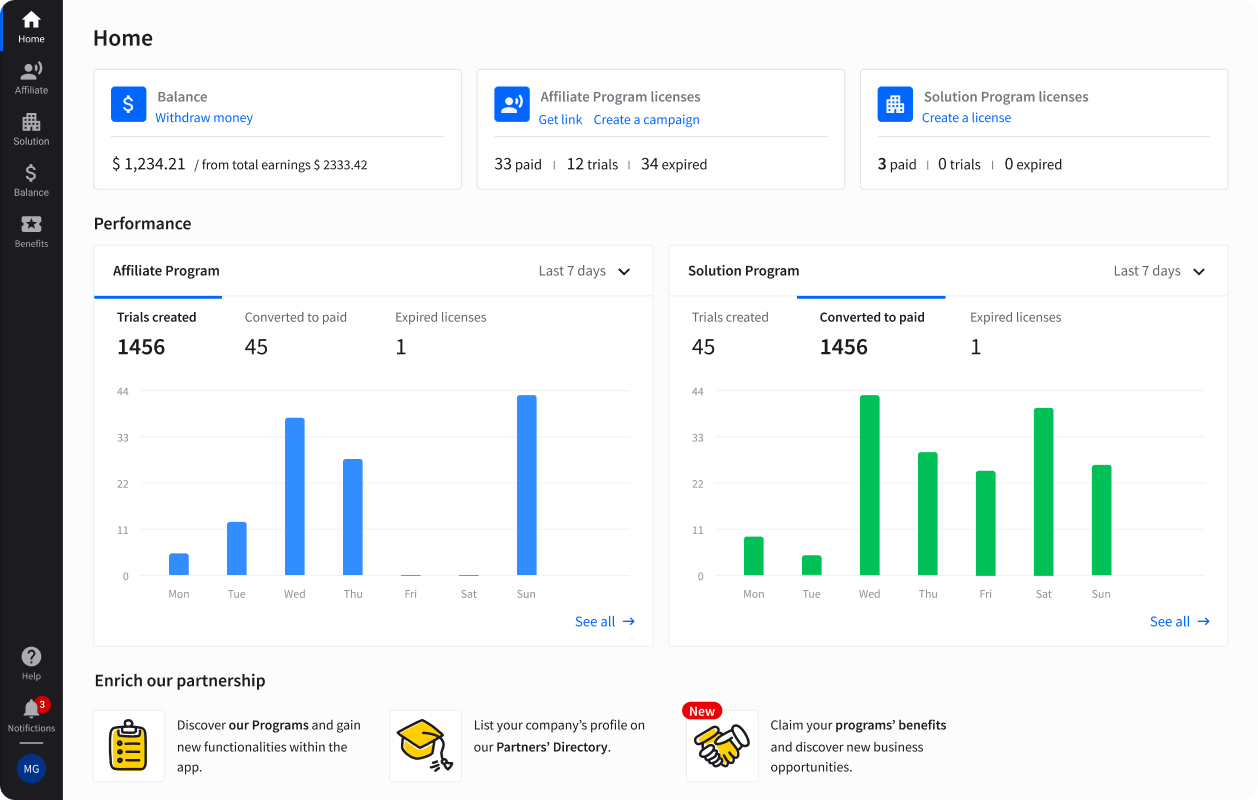Showing top 0 results 0 results found
Showing top 0 results 0 results found

Sales follow-ups, data entry, lead tracking: sound familiar? Yeah, you’re drowning in busywork, which feels like a never-ending to-do list.
The average sales rep spends only 28% of their week actually selling. The rest? Wasted on admin tasks that make you question why you got into sales in the first place.
But what if you could reclaim that time and focus on closing deals instead? Sales automation does exactly that. It takes the grunt work off your plate, speeds up your pipeline, and keeps leads engaged, without you lifting a finger.
Big companies already use automation to increase productivity by 14.5% and reduce marketing overhead by 12.2%. You can do it too, without spending a fortune on tools.
Let’s break down how you can hit pause on the chaos, save precious time, and focus on turning prospects into loyal customers to drive sales.
What is sales automation?
Sales automation is all about making life easier for the sales team. Instead of spending hours on repetitive tasks, you let the software handle the heavy lifting. Things like following up with leads, sending reminders, tracking sales, and managing orders happen automatically, reducing administrative tasks significantly.
Think of it as a smart assistant that works 24/7. No missed follow-ups, no messy spreadsheets, no wasted time.
Here’s what sales automation can do:
- Send follow-up emails and reminders so you never lose touch.
- Capture and qualify leads without manual sorting.
- Generate reports and track performance without extra effort.
- Manage contracts and orders with zero paperwork.
And guess what? It works. McKinsey found that about one-third of sales tasks can be automated. Think how much more your team could sell if they weren’t stuck doing admin work all day.
Also, automation doesn’t replace your sales team but supercharges them. It helps them focus on closing deals, building relationships, and driving revenue.
Definition and purpose
Sales automation is the use of software to automate sales processes, freeing up sales teams to focus on high-value activities such as lead generation, qualification, and closing deals.
The primary purpose of sales automation is to streamline and optimize the sales process, increasing efficiency, productivity, and revenue. By automating routine tasks, sales teams can dedicate more time to building relationships and driving sales, ultimately boosting overall performance.

Benefits of sales automation
Sales automation helps you save time, make more money, keep customers happy, and close deals faster. The benefits are not limited to:
- Increased revenueSales reps waste too much time on admin work. Automation takes care of that, so they can focus on selling instead of updating spreadsheets.
- Faster conversionsNot all leads are equal. Automation scores and segments them, so your team focuses on the hottest prospects first. Less time wasted, more deals closed.
- Prevent missed opportunitiesEver forget to follow up with a lead? Automation remembers for you. It schedules reminders and tasks so no meeting or email falls through the cracks.
- Streamline reporting and analyticsNo more digging through messy data. With one-click dashboards and real-time reports, managers get instant insights into sales performance.
- Better customer experienceFaster responses. Personalized communication. Seamless interactions across email, chat, and calls. Customers feel valued, and that leads to loyalty.
If your team is still juggling manual tasks, they’re losing time and sales. Automate your sales process with sales automation tools to improve workflow.
Increased sales productivity and efficiency
Sales automation software can significantly increase sales productivity and efficiency by automating repetitive tasks, such as data entry, lead tracking, and follow-up emails. By automating these tasks, sales reps can focus on more critical activities, such as building relationships with customers and closing deals. According to a study by McKinsey, sales automation can increase sales productivity by up to 15%. This means your team can achieve more in less time, driving higher revenue and growth.
Improved accuracy and reduced errors
Sales automation can also improve accuracy and reduce errors by automating tasks such as data entry and lead tracking. Automated systems ensure that data is accurate and up-to-date, reducing the risk of human error. Additionally, sales automation software provides real-time insights and analytics, enabling sales teams to make data-driven decisions. This not only enhances the quality of your sales data but also empowers your team to act on reliable information, leading to better outcomes.
Enhanced customer experience through personalized communication
Sales automation can also enhance the customer experience by providing personalized communication. Automated systems can send personalized emails, messages, and follow-ups to leads and customers, ensuring that they receive relevant and timely information. This personalized approach helps build trust and rapport with customers, increasing the likelihood of conversion. By tailoring your communication to each customer’s needs and preferences, you create a more engaging and satisfying experience that fosters loyalty and drives sales.
How automation improves sales productivity
Automate repetitive sales tasks to help you sell smarter, not harder. It frees up time for your reps to close more deals. If your reps are bogged down in admin work, it’s time to let technology take over. Here is how automation can make your workflow smoother:
1. Automated follow-ups
Following up manually is exhausting. With automation, emails, messages, and reminders are sent at the perfect time without you lifting a finger. Leads stay engaged, and no opportunity slips through the cracks. You can even personalize follow-ups based on customer actions, making outreach feel natural and relevant.
2. Sales pipeline management
Keeping track of deals across different stages can get messy. Automation gives you a clear view of your sales pipeline, so you always know what’s moving forward and what’s stuck. It helps identify roadblocks and sends alerts when a deal needs attention. With this, your team can focus on high-priority opportunities instead of scrambling through spreadsheets.
3. Lead scoring and prioritization
Not all leads are worth the same effort. Automation assigns scores based on engagement, behavior, and potential value, helping you focus on high-quality leads. It tracks interactions like email opens, website visits, and demo requests to determine intent. This means your team spends more time selling to people who are actually ready to buy.
4. Smart appointment scheduling
Back-and-forth emails just to set a meeting? No thanks. Sales automation syncs with your calendar and lets leads book time slots that work for both of you. It also sends automated reminders, reducing no-shows. No more wasted time, and simple scheduling that keeps your sales cycle moving.
5. Automated data entry
Sales reps shouldn’t be stuck inputting data. Automation logs emails, calls, and meetings into your CRM, keeping records updated without manual effort. It ensures accuracy, eliminates duplicate entries, and frees up hours for actual selling. With this, your team can spend less time on admin work.
6. Quote, invoice and payment management
Sending quotes and chasing payments can be a headache, but a sales automation platform streamlines this by generating quotes, sending invoices, and following up on overdue payments automatically. It ensures clients receive the right documents on time, reducing delays. So, faster payments and less time wasted on paperwork.
7. Personalized email and messaging campaigns
Blasting generic emails isn’t effective anymore. Sales automation personalizes outreach based on customer behavior, past interactions, and preferences. It can segment audiences and send the right message at the right time. This increases open rates, engagement, and, ultimately, conversion rates.
8. AI-powered sales forecasting
Guessing future revenue isn’t a strategy. Automation analyzes past trends, deal progression, and market conditions to predict future sales. This helps managers plan ahead, allocate resources effectively, and adjust strategies if needed. Accurate forecasting means fewer surprises and better decision-making.
9. CRM integration
A sales tool that doesn’t sync with your CRM? Useless. Automation ensures real-time data sharing between your sales platform and CRM. Contacts, interactions, and deal progress update automatically, keeping your database clean. This eliminates manual entry and improves collaboration across the team.
10. Performance analytics and reporting
Gut feelings don’t close deals: data does. Sales automation provides real-time reports and dashboards to track key metrics like conversion rates, response times, and pipeline health. It helps managers identify strengths, weaknesses, and opportunities for improvement. With this, you can make smarter decisions and optimize your sales strategy.
Let's become Partners!
Introduce our products to your clients, offer services around them and gain a new stream of income.

Sales process automation
Understanding the sales process and identifying areas for automation
To implement sales automation effectively, it’s essential to understand the sales process and identify areas for automation. This involves analyzing the sales workflow, identifying repetitive tasks, and determining which tasks can be automated.
By automating these tasks, sales teams can focus on high-value activities, such as building relationships with customers and closing deals. The key is to streamline the workflow, reduce manual effort, and enhance overall efficiency, allowing your team to operate at peak performance.
Best sales automation software and tools
Sales automation only works if you have the right tools. Here are some of the best options to streamline your workflow. Sales managers utilize these tools to assign leads, track sales team performance, and reduce the time spent on administrative tasks, allowing them to focus on essential activities that contribute to closing deals.
1. CRM tools
A customer relationship management (CRM) tool is the backbone of your sales process. It keeps track of leads, automates follow-ups, and helps manage deals.
- HubSpot CRM: Great for small to mid-sized teams. User-friendly, integrates with marketing tools, and has built-in automation.
- Salesforce: Best for large teams. Powerful, customizable, and packed with automation features.
- Pipedrive: Perfect for visual pipeline management. Simple, intuitive, and great for tracking deals.
2. Email automation tools
Email is still king in sales, but manually sending follow-ups? That’s a time-killer.
- Mailchimp: Ideal for automated email sequences, newsletters, and simple campaigns.
- ActiveCampaign: Advanced automation for personalized email sequences based on customer behavior.
These tools help you send the right message at the right time without lifting a finger.
3. Lead generation and chatbots
Your website gets visitors every day. But if no one engages them, you’re losing leads. That’s where AI chatbots step in.
- Drift (SalesLoft): Conversational AI that qualifies leads before sending them to your sales team.
- Intercom: Engages visitors instantly and guides them through your sales funnel.
- ChatBot: Customizable AI chatbot for answering FAQs and scheduling demos.
Chatbots work 24/7 to capture leads, answer basic questions, and make sure no potential customer slips through the cracks.
4. Sales intelligence and reporting
Want to improve your sales calls? These tools analyze conversations, find patterns, and give you insights to boost conversions.
- Gong: Records and analyzes sales calls, highlighting what works (and what doesn’t).
- Chorus AI: Tracks customer interactions, offering insights to refine your pitch.
With these tools, you’ll know exactly why deals close or fall apart.
5. Sales pipeline and workflow automation
Manually updating your sales pipeline? Forget it. These tools connect your favorite apps and automate workflows.
- Zapier: Links different sales tools together (e.g., sends a Slack message when a deal moves in your CRM).
- Outfunnel: Syncs sales and marketing data so leads get nurtured automatically.
With workflow automation, you’ll spend less time on admin and more time closing deals.
6. Configure price quote software
Pricing can get messy. Discounts, custom pricing, approvals. It’s a lot to manage manually. CPQ software simplifies the process. It ensures sales teams generate accurate quotes instantly, following predefined pricing rules and approval workflows.
- DealHub: All-in-one CPQ solution with automated approvals and real-time pricing.
- PandaDoc: Combines CPQ with document automation for a smooth sales process.
- Salesforce CPQ: Best for businesses already using Salesforce CRM.
With CPQ, no more delays in finalizing pricing. Your team can generate quotes fast, reduce errors, and move deals forward without the back-and-forth.
7. Sales proposal software
Writing proposals from scratch? That’s a huge time-sink. Sales proposal software automates the process, of creating professional, branded proposals in minutes.
- Proposify: Customizable templates and real-time tracking.
- PandaDoc: Pulls in client details, pricing, and product info automatically.
- Qwilr: Turns proposals into interactive, mobile-friendly pages.
Some tools even track when prospects open and engage with your proposal, so you know exactly when to follow up. No more guessing games.
8. Contract management tools
Contracts slow down deals. Sales teams waste time waiting for approvals, tracking changes, and chasing signatures. Contract management tools fix that by automating workflows and keeping everything in one place.
- DocuSign: Secure contract creation, tracking, and e-signatures.
- Concord: Real-time collaboration and version tracking.
With these tools, you eliminate bottlenecks, reduce legal delays, and get contracts signed without the hassle.
9. eSignature Software
Printing, scanning, and mailing contracts? That’s ancient. eSignature tools make it fast and easy for customers to sign from anywhere, on any device.
- DocuSign: The industry leader in secure digital signatures.
- HelloSign: Simple, intuitive, and integrates with Google Workspace.
Plus, you’ll get notifications when a document is signed. So there’s no more waiting around for approvals.
10. Subscription management software
If you sell subscriptions or recurring services, managing billing manually is a nightmare. Subscription management software automates invoicing, renewals, and customer lifecycle management.
- Chargebee: Handles complex subscription pricing, upgrades, and downgrades.
- Recurly: Optimizes revenue by reducing churn and payment failures.
- Zuora: Enterprise-level solution for subscription businesses.
These tools ensure smooth billing, reduce churn, and make revenue more predictable.
Choose the right sales automation tool
You don’t need every sales automation tool out there.
With so many options, it’s tempting to sign up for everything. But that’s a quick way to overcomplicate your sales process instead of improving it. When implementing sales automation, the key is to pick the right tools for your business, not overload your team with software they won’t use.
So, how do you decide? Let’s break it down.
1. Identify your biggest sales challenges
Before choosing a tool, ask yourself: What’s slowing down your sales process?
Is it:
- Wasting time on data entry?
- Struggling to track leads and follow-ups?
- Losing deals because of slow quotes and contracts?
- Spending hours on manual email outreach?
Every sales team has different bottlenecks. Instead of getting a tool because it’s popular, get one that solves your actual problems.
For example:
- If your reps forget to follow up, you need a CRM with automated reminders.
- For leads falling through the cracks, look for lead tracking and scoring tools.
- If pricing slows down deals, a CPQ tool can speed up quotes.
Find your biggest pain points first. Then look for tools to fix them.
2. Keep it simple
The more tools you add, the harder it gets to manage them. Complicated tech stacks slow teams down.
Instead of getting separate tools for every task, look for an all-in-one platform that handles multiple functions.
For example:
- HubSpot: Combines CRM, email automation, and lead tracking.
- PandaDoc: Handles proposals, quotes, and contracts in one place.
- Outfunnel: Syncs sales and marketing data automatically.
If a single tool can replace three others, go for it. Your team will thank you.
3. Prioritize integration with your existing tools
Your sales automation tool should work with what you already use. Otherwise, you’ll waste time switching between platforms.
Before you commit, check if the tool integrates with:
- Your CRM (Salesforce, HubSpot, Pipedrive)
- Your email marketing platform (Mailchimp, ActiveCampaign)
- Your contract or billing system (DocuSign, Chargebee)
A good integration keeps everything connected and updated automatically. So your sales team isn’t stuck copying and pasting data between tools.
4. Consider ease of use and adoption
A tool is only useful if your team actually uses it.
- If it takes months of training, that’s a red flag.
- If it feels clunky or complicated, your reps will avoid it.
Before making a decision, ask:
- Is it easy to learn?
- Does it fit into your current workflow?
- Can your team start using it with minimal training?
Some tools offer free trials or demos. Take advantage of those to see how easy (or painful) they are to use.
5. Check for scalability
Your sales process today won’t be the same in a year. As your team grows, your tools should keep up.
- Can you add more users without extra headaches?
- Does it support advanced features as you scale?
- Will it still be useful if you double your sales volume?
A good sales automation tool should grow with your business, not hold you back.
6. Compare pricing and ROI
Sales automation should save time and make you money. If it’s not doing that, it’s not worth it.
Look at:
- Pricing plans: Is it per user? Monthly or annual?
- Hidden costs: Does it charge extra for integrations, reports, or premium features?
- ROI potential: Will it help you close more deals or shorten your sales cycle?
For example:
- A $50/month tool that saves 10 hours a week? Worth it.
- A $500/month tool that no one uses? A waste of money.
Choose based on value, not just price.
The goal of automation is to make sales easier, not more complicated. Choose wisely, and your team will spend less time on busy work.

Supercharge your sales with the right tools (and extra revenue!)
Choosing the right sales automation tool is key. But what if you could also monetize your recommendations while helping others streamline their sales?
That’s where our Partner Program comes in. If you have an audience of business owners, marketers, or sales teams, you can earn by promoting top-tier customer communication tools.
- LiveChat: Engage leads instantly and improve customer interactions
- ChatBot: Automate conversations and qualify leads effortlessly
- HelpDesk: Keep support tickets organized for smoother workflows
Earn commissions, grow your network, and offer cutting-edge tools to your audience.
Join our Partner Program today and start turning sales automation into your next revenue stream!

How sales automation works: The hybrid approach
Sales automation isn’t about replacing sales reps. It’s about making their jobs easier. The best approach is a hybrid model where automation handles the repetitive stuff, while humans focus on building relationships and closing deals.
- Not a complete replacement
Automation is powerful, but it can’t replace human connection. Customers still want to talk to real people. That’s why the best sales teams use automation to handle time-consuming tasks while reps focus on deeper interactions.
Think about it. Would you trust a chatbot to negotiate a six-figure deal? Probably not. That’s where humans come in. But scheduling a follow-up call? That’s automation’s job.
- Automated tasks vs. human tasks
A good sales process balances automation and human effort.
What automation does:
- Data entry and lead distribution
- Sales forecasting and reporting
- Follow-up emails and reminders
- Lead scoring and qualification
What humans do:
- Relationship building and trust
- Complex sales calls and problem-solving
- Strategic negotiations and closing deals
- Handling objections and customization
Automation prepares the ground, but humans seal the deal.
- Integrating with CRM
For automation to work well, it needs to sync with your CRM. If your sales tools aren’t connected, you’ll waste time switching between platforms.
A good integration ensures:
- Seamless data sharing between automation tools and your CRM.
- Updated customer records without manual entry.
- Real-time insights for better decision-making.
Everything stays organized, accessible, and actionable. No more lost leads or scattered data.
Automation + Humans = The Winning Formula
The best sales teams don’t choose between automation and people. They use both. Automation handles the repetitive work, so reps can focus on driving revenue.
If you’re not using automation yet, you’re working harder than you need to.
Developing a sales automation strategy
Sales automation can transform your sales process, but only if you do it right. Jumping in without a plan? That’s a recipe for chaos. You need a strategy that balances efficiency and personalization while keeping your sales team on board.
Here’s how to make it happen.
1. Identify bottlenecks in your sales process
Before adding automation, map out your current sales workflow. Look for bottlenecks, repetitive tasks, and areas where deals slow down.
Ask yourself:
- Where is my sales team wasting time?
- Which tasks feel manual and repetitive?
- What steps could be streamlined with automation?
Common pain points? Data entry, lead distribution, follow-up emails, and reporting. Those are prime candidates for automation.
2. Balance automation and personalization
Not everything should be automated. Some interactions need a personal touch.
Automate:
- Follow-up emails
- Appointment scheduling
- FAQ responses via chatbots
Keep human:
- Personalized demos
- Complex negotiations
- High-value client relationships
Sales automation enhances, not replaces, human interaction. Find the right balance so customers feel engaged, not ignored.
3. Train and prepare your sales team
Change can be intimidating. Some sales team members might think automation will replace their jobs. The reality? It makes their work easier by removing busywork.
- Educate your team on how automation helps them.
- Address concerns about job security and workload.
- Appoint a dedicated team to manage the transition.
Automation works best when your team embraces it. Make sure they see it as a tool for success, not a threat.
4. Implement the sales automation
Now, implement the tools that fit your team’s needs and integrate them with your existing workflow. If possible, go for an all-in-one platform that handles both sales and marketing automation. Less hassle, more efficiency.
By automating the right tasks, keeping a human touch, and getting your team on board, you’ll create a more efficient, scalable, and high-performing sales engine.
Sales automation vs. marketing automation: what’s the difference?
Sales and marketing automation often get mixed up. They both streamline processes, improve efficiency, and help businesses grow. But they serve different purposes.
Sales automation helps your sales team convert leads into customers. It streamlines tasks that move deals through the pipeline, so reps spend more time with customers.
- Main Focus: Managing pipelines, following up with leads, and closing deals.
- Key Features: CRM integration, automated follow-ups, lead scoring, forecasting, and contract management.
- Who Uses It? Sales teams, account managers, and business development reps.
Marketing automation brings in leads and nurtures them until they’re ready for sales. It automates email campaigns, social media, and content distribution to engage potential customers.
- Main Focus: Attracting leads, nurturing them, and increasing brand awareness.
- Key Features: Email marketing, lead segmentation, landing pages, and social media scheduling.
- Who Uses It? Marketing teams, content creators, and demand generation specialists.
How sales and marketing automation work together
Sales and marketing automation are not competing forces. When integrated, they create a smooth customer journey from the first touch to a closed deal.
Marketing warms up leads → Sales takes over to close them.
Here’s how they work together:
- Lead scoring and handoff: Marketing automation scores leads based on engagement. Once a lead is warm, sales automation alerts reps to follow up.
- Consistent messaging: Both teams use automation to send the right message at the right time, ensuring a smooth transition from marketing to sales.
- Data sharing: A unified system (like HubSpot or Salesforce) syncs data between teams, so sales reps see a lead’s history before making contact.
Without integration, leads fall through the cracks. With it, you boost conversions and make the entire process more efficient.

Best practices for sales automation
To make sales automation work, you need the right approach. Follow these best practices to keep everything running smoothly.
1. Test constantly
Sales automation isn’t a “set it and forget it” tool. You need to test and tweak regularly.
- Check if your workflows are working as expected.
- A/B tests automated emails to improve response rates.
- Monitor data to see what’s helping (or hurting) conversions.
The goal? Optimize over time, not just at setup.
2. Maintain personalization
Automation shouldn’t make your interactions feel robotic. Keep it personal and engaging.
- Use dynamic fields (like the lead’s name or company) in emails.
- Set up smart triggers so messages feel timely, not random.
- Make sure chatbot responses sound human, not scripted.
People don’t want to talk to robots. They want meaningful interactions.
3. Centralize data
Automation works best when all your tools talk to each other. If data is scattered, you’ll waste time chasing information.
- Use a CRM that syncs with automation tools (like HubSpot or Salesforce).
- Store lead and customer data in one place to avoid duplicates.
- Make sure sales and marketing teams share the same data.
This ensures a smooth workflow and prevents miscommunication.
4. Regularly review and update
Sales strategies change, and your automation should keep up. Check-in regularly and make adjustments.
- Review reports to identify gaps and bottlenecks.
- Update email templates and chat responses based on feedback.
- Adjust lead scoring criteria as customer behavior evolves.
If you don’t update, you’ll fall behind.
Common pitfalls to avoid
Even the best sales teams make mistakes when setting up automation. Watch out for these common pitfalls.
1. Over-reliance on automation
Automation can’t replace human interaction, but it should enhance it.
- A chatbot can qualify a lead, but a real person needs to close the deal.
- Automated emails can follow up, but a sales rep should step in when needed.
- AI can score leads, but you still need human judgment.
Don’t lose the human touch.
2. Too many notifications
Spamming customers (or your sales team) with constant notifications backfires.
- Customers get annoyed if they receive too many follow-ups.
- Sales reps get overwhelmed if they get alerts for every tiny action.
- Important messages get buried in the noise.
Keep notifications useful, not overwhelming.
3. Ignoring sales goals
Automation should support your sales strategy, not exist in a vacuum.
- If it’s not helping you close deals, it’s not working.
- If it doesn’t align with your sales goals, rethink your approach.
- If automation creates more work instead of reducing it, simplify.
Always ask: “Is this making sales easier?” If not, adjust.
Test, personalize, and keep your data centralized. But don’t rely on automation too much, as human interaction still matters. Avoid these common pitfalls, and you’ll have a seamless, efficient sales process that drives real results.
The future of sales automation
Sales automation is evolving fast. AI, big data, and voice technology are reshaping how businesses interact with customers. Let’s look at where automation is headed.
1. AI and machine learning are getting smarter
AI is already transforming sales, but it’s about to go next level.
- Predictive analytics will help sales teams make smarter, data-driven decisions by forecasting which leads are most likely to convert.
- AI chatbots will get more human-like, handling complex customer questions and freeing up sales reps for high-value tasks.
The result? Less guesswork, more precision.
2. Hyper-personalization will be the norm
Mass emails and generic sales pitches won’t cut it. Customers expect personalization.
- Big data and AI will analyze past interactions, preferences, and behaviors to deliver highly targeted messages.
- Sales reps will use AI-driven insights to craft personalized pitches that speak directly to each prospect’s needs.
Automation won’t just speed up sales. It’ll make them more relevant and engaging.
3. Voice and conversational AI are taking over
Voice assistants are moving beyond customer service. They’re becoming key players in sales.
- AI-powered virtual assistants will help reps by logging calls, suggesting responses, and even drafting follow-ups in real-time.
- Voice-based outreach automation will allow sales teams to send personalized voicemail drops or initiate AI-driven calls.
Selling will feel more natural and interactive.
4. Data privacy and compliance will be a bigger deal
With AI and automation handling more customer data, privacy concerns are rising.
- Stricter regulations like GDPR and CCPA require businesses to be extra careful about how they collect, store, and use customer data.
- Ethical AI usage will be a major focus, ensuring automation doesn’t cross any lines in personalization or decision-making.
Businesses that prioritize trust and transparency will have the edge.
Final Thoughts
Sales automation isn’t about replacing your team but freeing them up to focus on leads. By automating repetitive tasks like data entry, follow-ups, and lead scoring, your sales process becomes faster, smarter, and more efficient.
But remember, automation works best when balanced with a human touch. Your customers still want real connections, and that’s where your sales team shines.
The key is finding the right balance between automation and the human touch. Then, you’ll not only boost productivity but also drive higher revenue.
Ready to take your sales process to the next level? Start automating today and watch your business grow!


